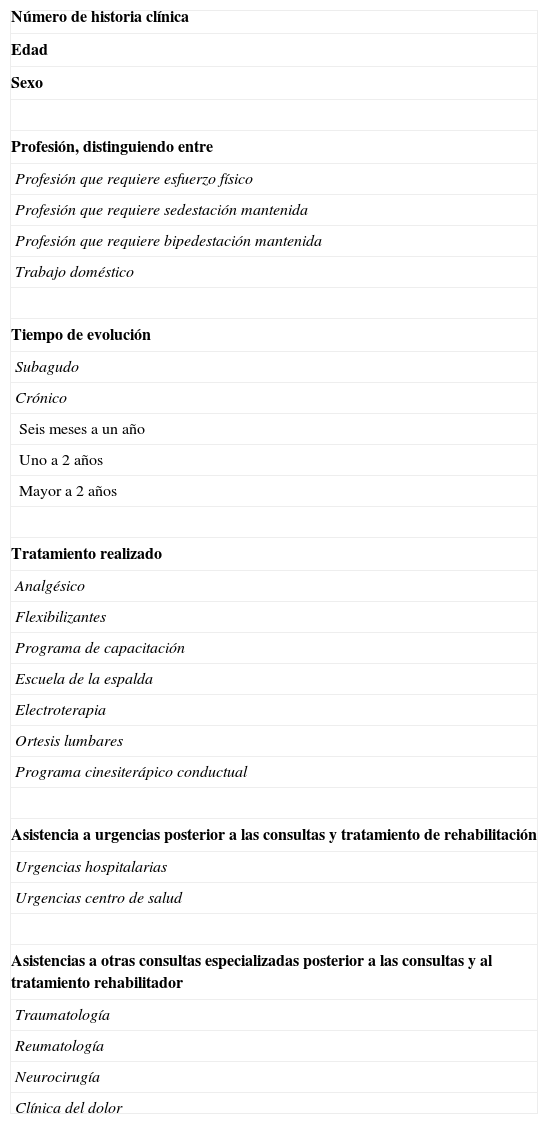Valorar si en los pacientes con dolor lumbar crónico, la escuela de la espalda (EE) asociado a un programa de capacitación lumbar (PCL) disminuye la asistencia a los servicios sanitarios tanto en atención primaria (AP), urgencias u otras consultas especializadas, en comparación con la realización única de PCL como intervención.
Pacientes y métodoEstudio descriptivo retrospectivo que incluye 2 grupos de pacientes con dolor lumbar crónico sin indicación quirúrgica, necesidad de continuar estudios ni ajuste de medicación analgésica habitual. El primer grupo recibe un PCL (grupo A) únicamente como intervención y el segundo realiza «además del PCL» la EE y (grupo B). Se analizó, tras un seguimiento comprendido entre 17 y 29 meses, la asistencia o no a los diferentes servicios sanitarios posterior al alta del programa de rehabilitación.
ResultadosDe los 59 pacientes analizados: 25 pertenecían al grupo A y 34 al B. La totalidad de los pacientes pertenecientes al grupo B no demandan una nueva valoración médica, acudiendo a los servicios de AP únicamente para analgesia puntual, frente al 28% del grupo A que ampliaron su estudio con una nueva valoración médica en otros servicios. Si analizamos la asistencia a los servicios de urgencias en general, el 36% de los pacientes pertenecen al grupo A frente al 20,6% en el grupo B.
ConclusionesParece que los pacientes que complementan el PCL con la EE asimilan mejor el concepto de cronicidad y benignidad de su dolor lumbar, repercutiendo en una menor afluencia a los servicios sanitarios.
To determine if the back school combined with a low back exercises program (LBEP) for patients with chronic low back pain reduces visits to the health care services (primary care, emergency or other specialized consultations) compared to use of LBEP alone.
Patients and methodsA retrospective descriptive study was performed. It included two groups of patients with chronic low back pain who did not require surgery, need to continue studies or changes in their usual analgesics. The first group only received physical therapy consisting of a lumbar training program (group A) and the second one received the back school program as well as the LBEP (group B). After a follow-up of 17 to 29 months, attendance to the different health care services after discharge from the rehabilitation program was analyzed.
ResultsA sample of 59 patients was studied. Of these, 25 patients were included in group A and 34 in B. None of the patients in group B requested a new medical consultation. They only went to the primary care services for occasional analgesics. In group A, 28% returned for more studies in other Emergency services in general. If the visits to the emergency services are analyzed in general, 36% of the patients belong to group A versus 20.6% in group B.
ConclusionsIt appears that patients who combine the low back exercises program with the Back School better assimilate the concept of chronicity and benignness of their condition. This has an effect on fewer visits to the health care services.
Artículo
Comprando el artículo el PDF del mismo podrá ser descargado
Precio 19,34 €
Comprar ahora












